
Invisalign Moderate refers to a specific treatment option within the Invisalign system designed for patients with moderate orthodontic issues. This plan is typically suited for cases that require more than minor adjustments but are not as complex as severe cases. It usually involves a moderate number of aligners and a treatment period that is shorter than the more comprehensive Invisalign plans but longer than Invisalign Lite.
This option is ideal for those needing moderate corrections to issues like crowding, spacing, or alignment. It provides a balance between efficiency and the level of correction needed.


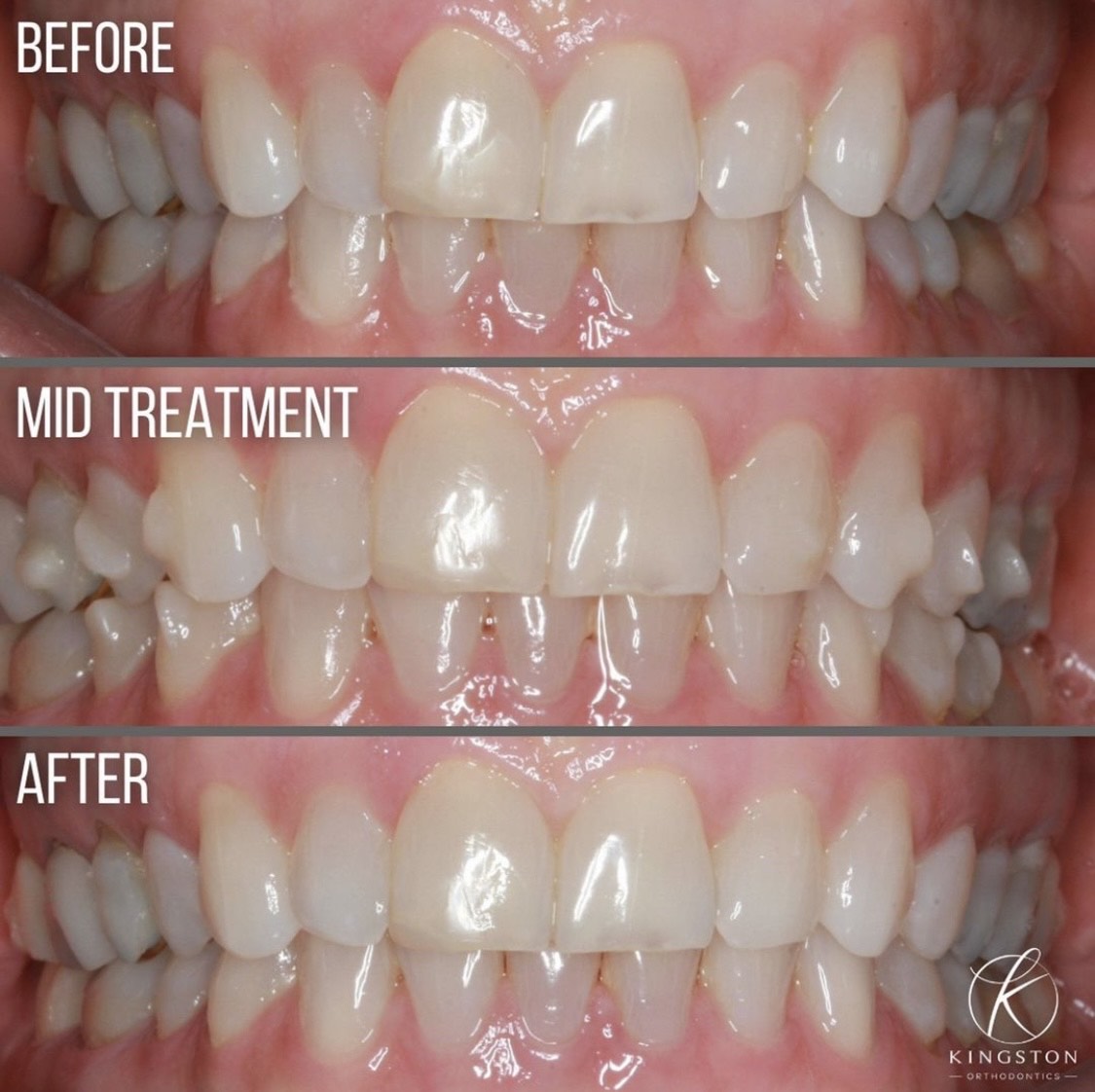




Invisalign Moderate works similarly to other Invisalign treatments but is tailored specifically for moderate orthodontic issues. Here's a step-by-step overview:

Invisalign Moderate is an advanced, easy-to-use and precise aligner system for adults. The complexity of misalignment and the teeth that requires movement determines the number of aligners needed to complete the treatment.
The higher the number of aligners required, the longer treatment takes, meaning a higher treatment cost.
Different Invisalign options are available. They include:
Previously, if a patient needed 15 aligners to get the best result (one aligner more than 14 aligners needed in the Lite option), the treatment would fall under Invisalign Full, meaning a higher treatment cost for the patient.
With Invisalign Moderate, which has up to 20 aligners, patients can get a lower treatment cost than the Invisalign Comprehensive option.
Like other dental treatments, the cost of Invisalign treatment varies based on different factors, such as the number of aligners needed for the treatment, the complexity of the case, the treatment duration and number of visits.
Invisalign providers offer different payment plans, and you can make a full payment or instalments of up to 12 months with no interest.
Invisalign treatment packages usually include the following.
Invisalign treatment costs may not cover


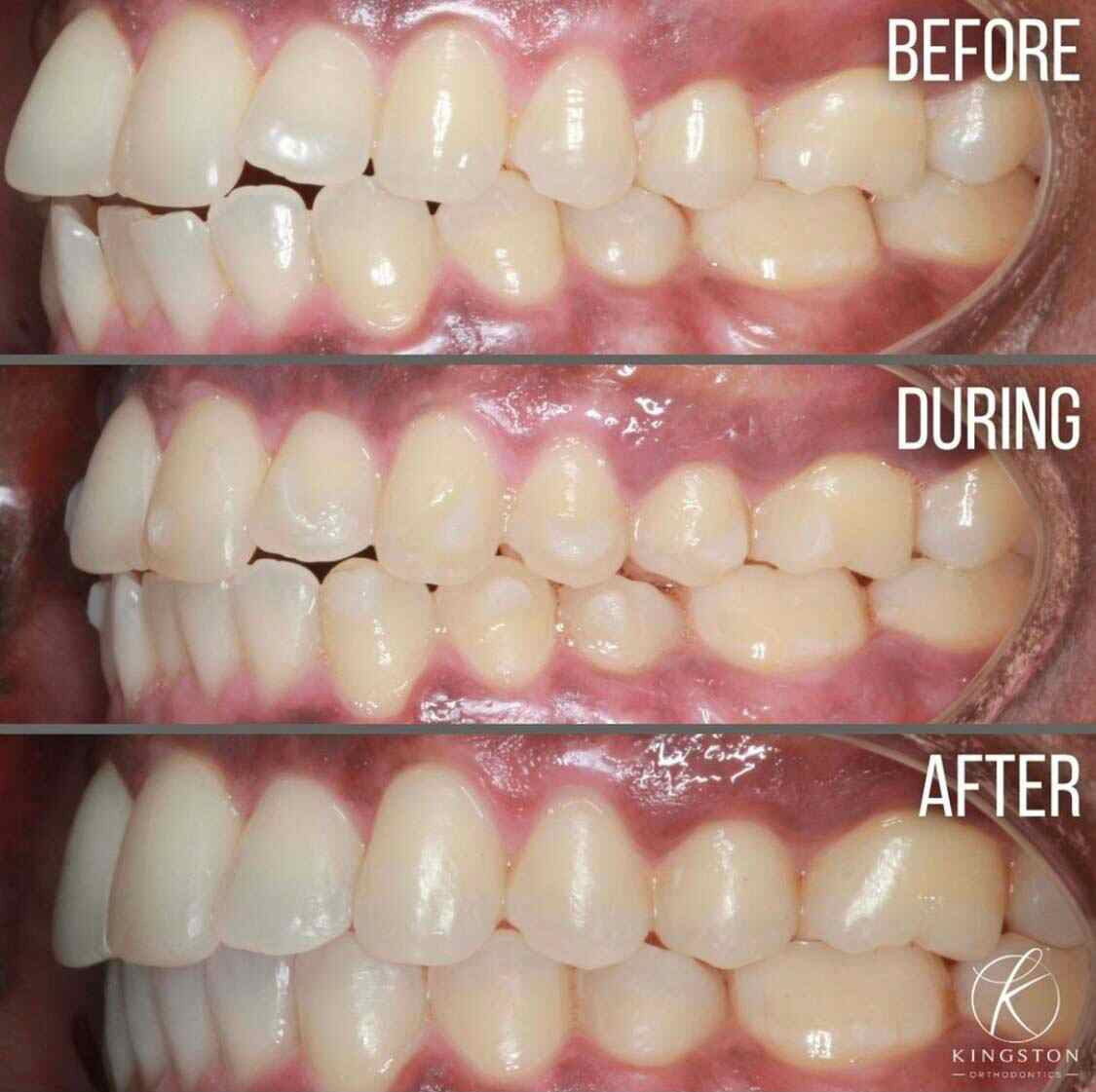


Clear aligner braces and clear retainer braces may look the same as they are made from clear plastics, but they are different. Retainers are for keeping the teeth in position after alignment and cannot move the teeth, while clear aligners move the teeth and change their position.
A clear aligner brace is a dynamic device, while a clear retainer brace is a static device. For example, the Invisalign Vivera Retainer and Invisalign aligners are made from similar clear plastic material, but the aligners are for teeth straightening, while Vivera retainers keep the teeth in place after Invisalign aligner treatment or any orthodontic treatment.
Fixed retainers have an orthodontic chain or wire glued to the back of the upper and lower front teeth. They are fitted in addition to removable retainers but are fixed to teeth. Fixed retainers are always in place, which is an advantage, but they cover only the front 4 – 6 teeth leaving other teeth without retention. Another downside of fixed retainers is the increased risk of plaque retention and they therefore require an excellent level of oral hygiene and regular hygiene appointments.
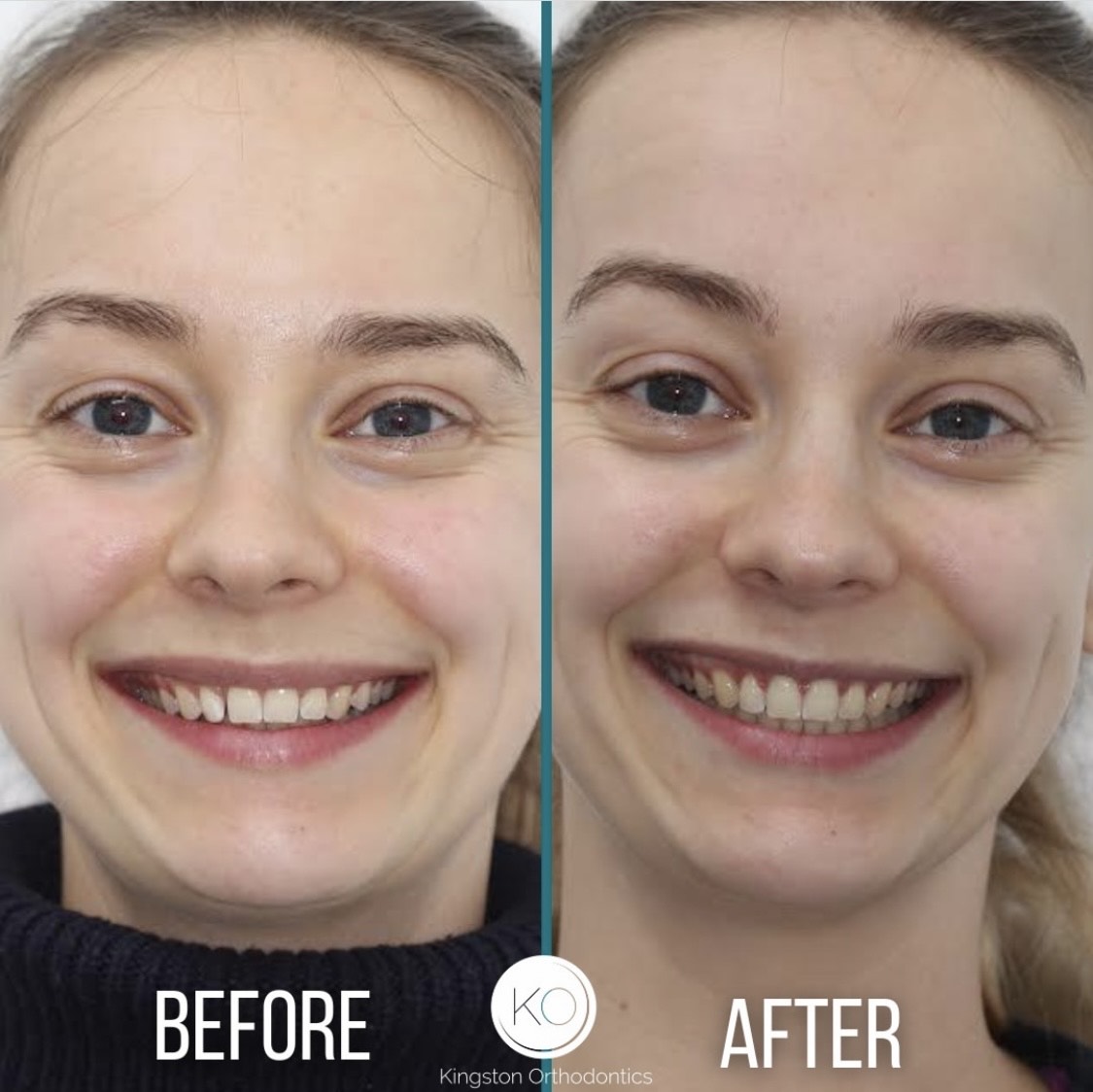
Invisalign system is also known as short-term orthodontic treatment as it is suitable for correcting mild teeth misalignment and bite problems. It can correct the following.
Crowding occurs from insufficient space in the jaw to accommodate all the teeth. This may result from unproportioned teeth size to jaw size, causing the teeth to overlap each other or the teeth sitting out of the line of the arch.
This is the opposite of crowded teeth. It also results from unproportioned teeth size to jaw size, but the teeth are too small to fill the jaw space.
An overbite is where the top front teeth overlap the bottom teeth. The average amount of overlap is 20% but in some cases, the lower front teeth aren't visible behind the upper teeth when biting together and can cause damage to the gums. Invisalign can correct certain overbites, your orthodontist can advise you whether it is suitable in your case.
In an underbite the upper front teeth sit behind the bottom front teeth when the mouth is closed. This problem can range from a mild underbite that can be corrected with Invisalign braces, to a severe underbite that requires correction with jaw surgery.
For a crossbite, a tooth or multiple teeth on the top jaw sit on the wrong side of the bottom teeth. It can affect one tooth in the front of the mouth or an entire section of the back teeth. Invisalign aligner can correct mild to moderate crossbites.
Open bites are where the back teeth touch but upper and lower front teeth do not meet, leaving a gap at the front of the mouth when closed. Open bites that are related to tooth position can be corrected with Invisalign.



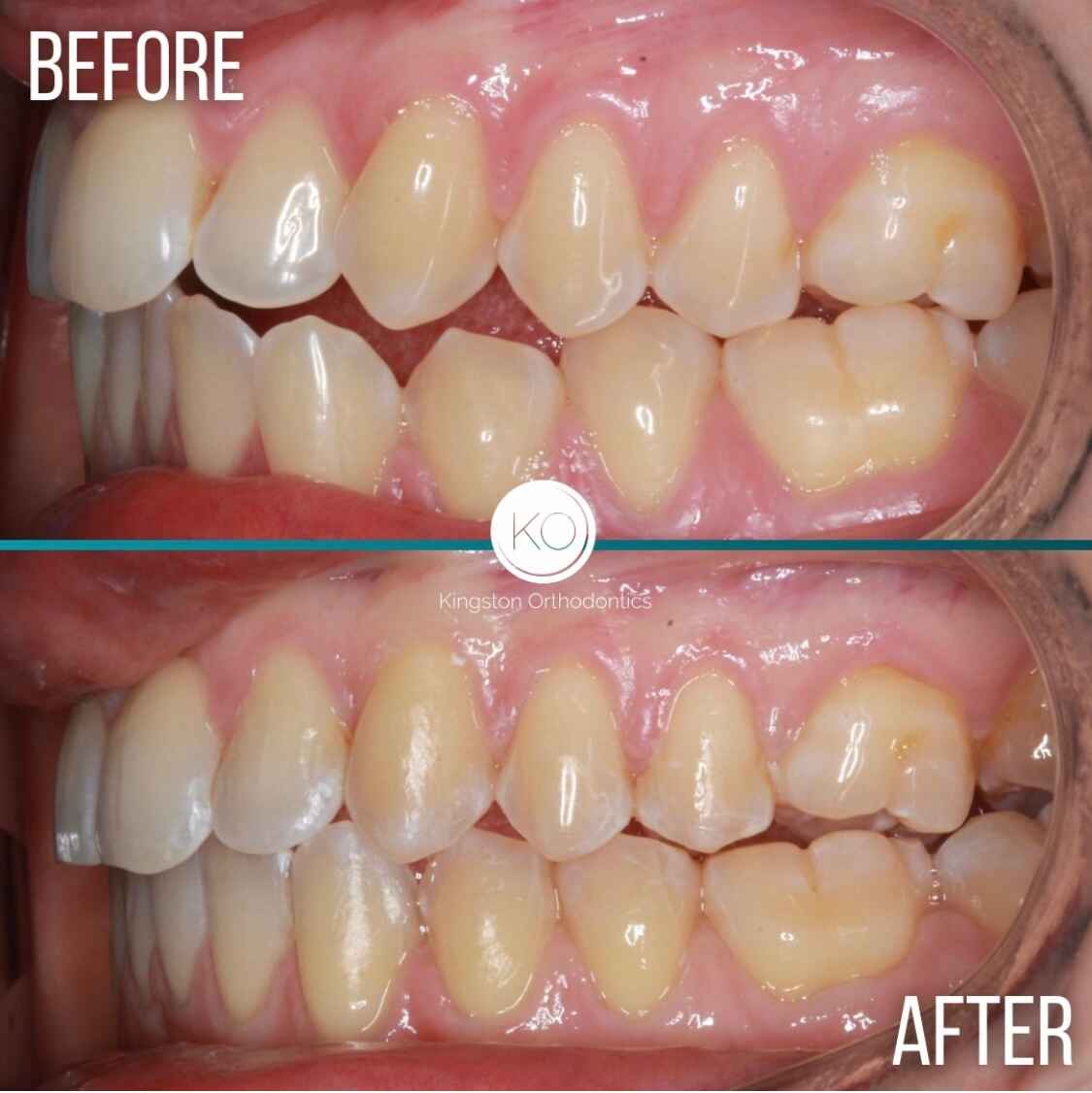


Compared to traditional metal and ceramic braces, Invisalign aligners have the following advantages.
Invisalign is an ideal option over traditional braces for teeth straightening requiring tilting and back-and-forth movement of the crown. However, when extensive teeth movement involving the root in the jaw bone is necessary, fixed braces are a more efficient option with a more predictable treatment outcome.
Call Kingston Orthodontics today on 0203 002 2501 to schedule a consultation with our Invisalign provider for your Invisalign clear aligner treatment.
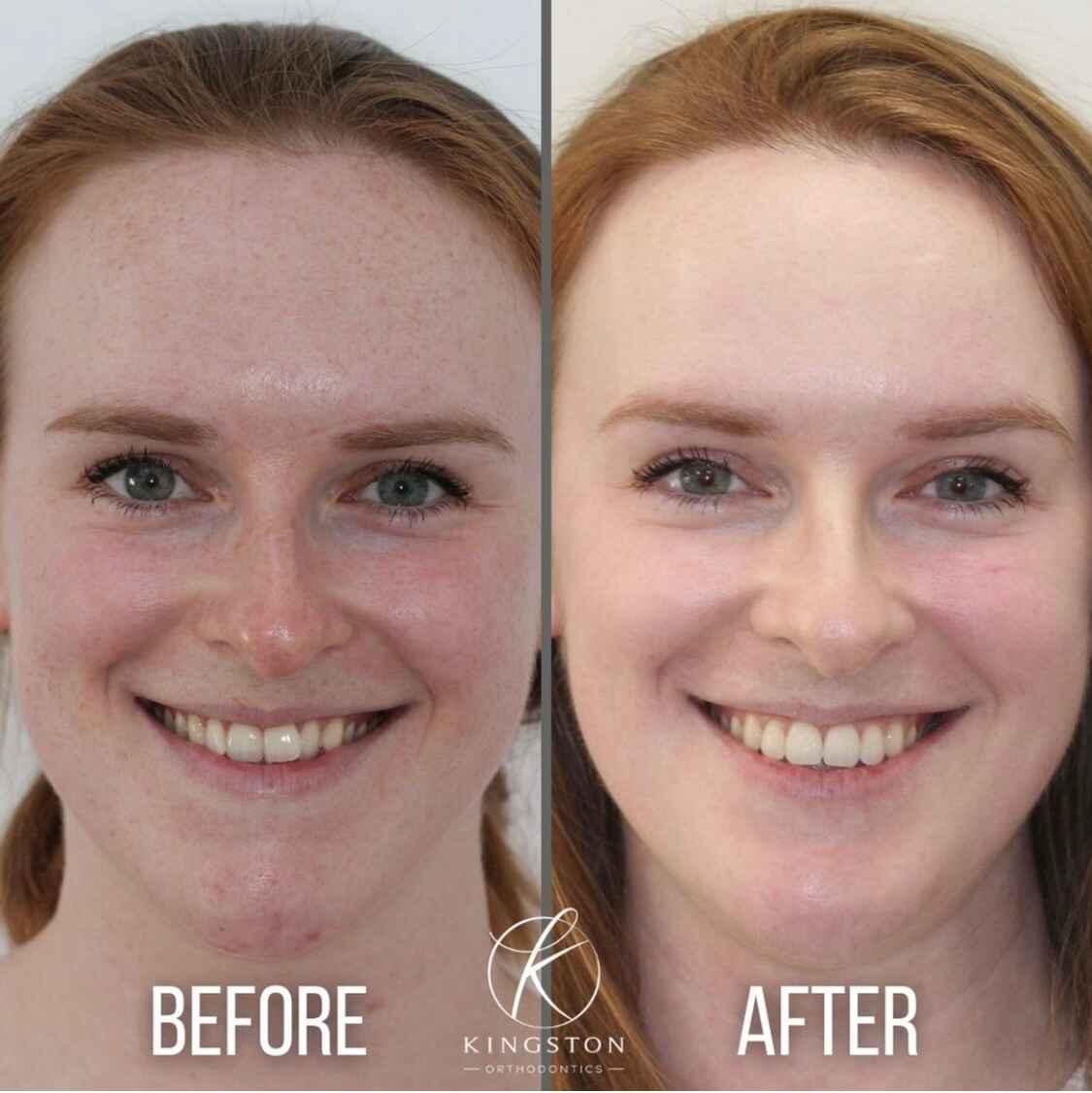

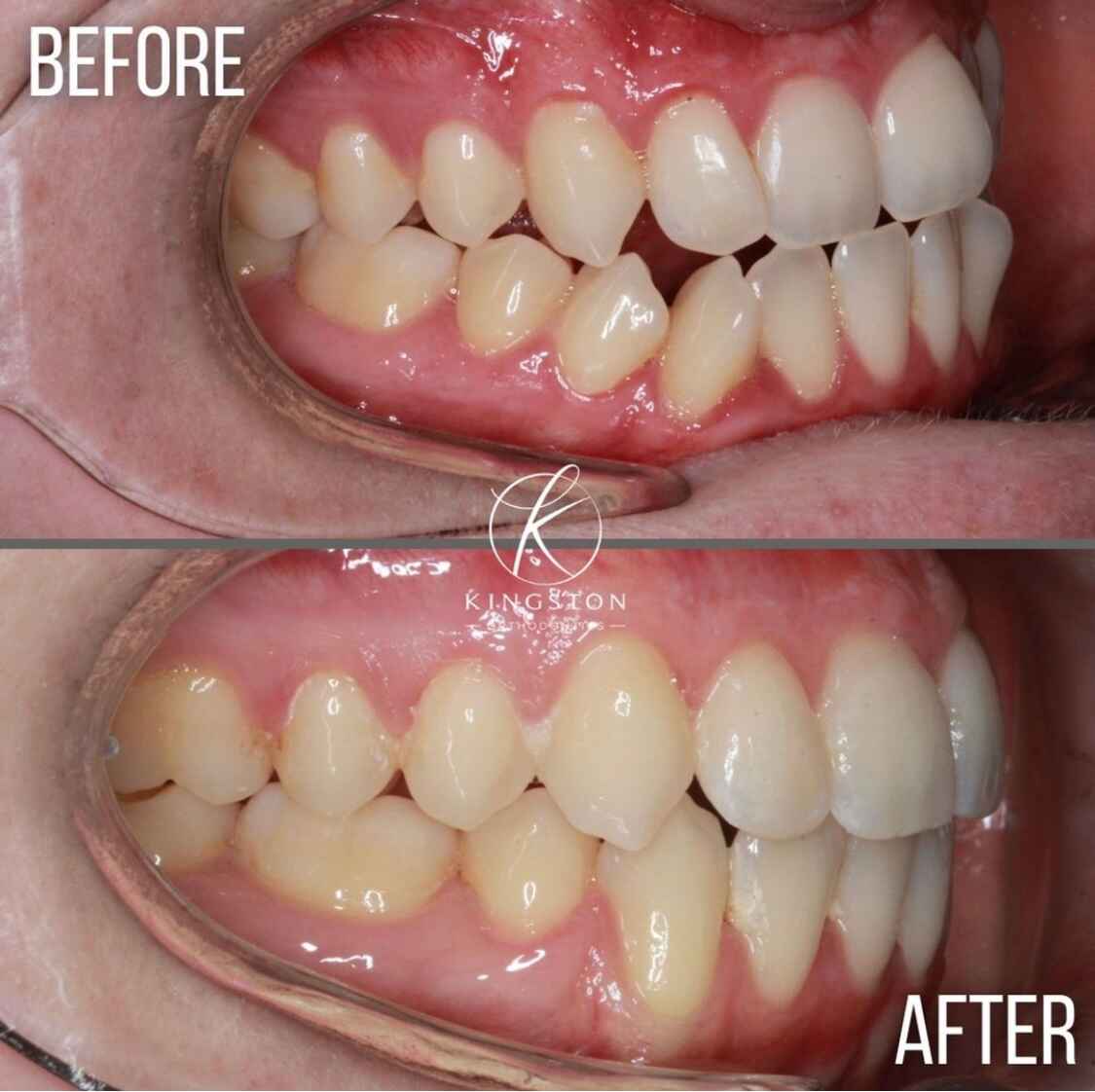




Spread the cost of any treatment
We are here to help you achieve the perfect – and affordable – smile so please talk to us about our popular interest-free payment plans. Spread the cost and relax – secure in the knowledge that your treatment will take place on time and on budget.